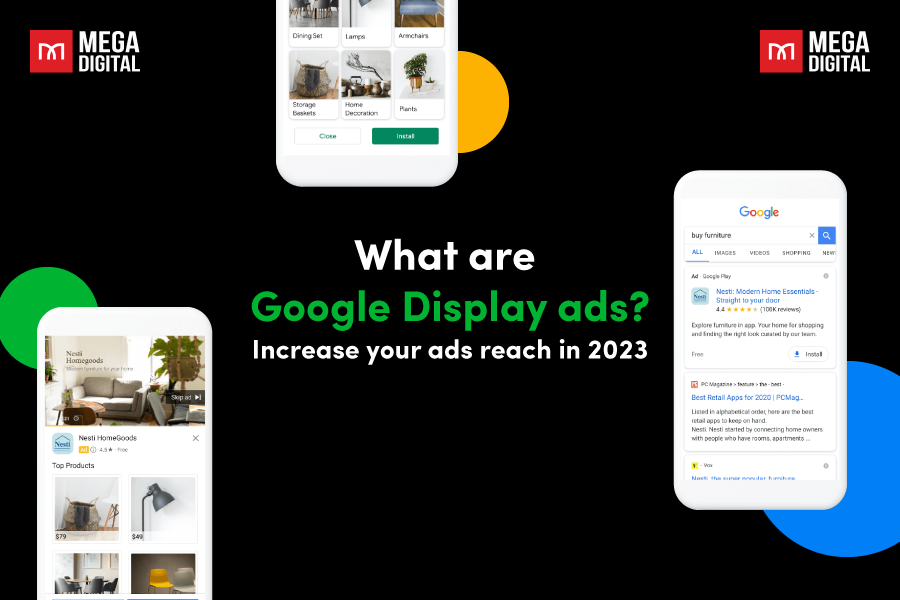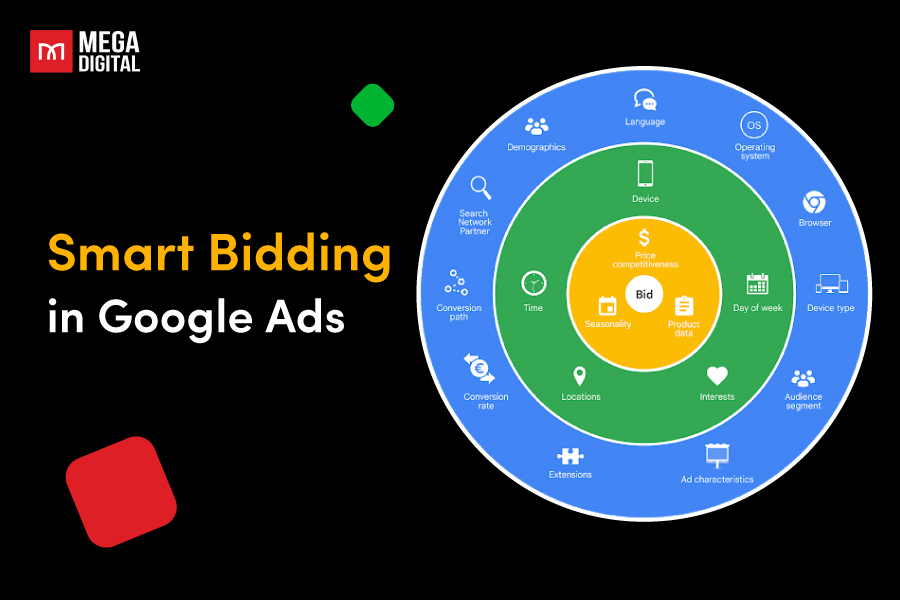Search ads vs Display ads, both serve different purposes in advertising. Search ads target users actively searching for products/services, with high intent & conversion rates. Display ads offer creative visuals on websites to create brand awareness and reach a wider audience. Choosing between them depends on your different elements, let’s find out!
Advantages of Search ads
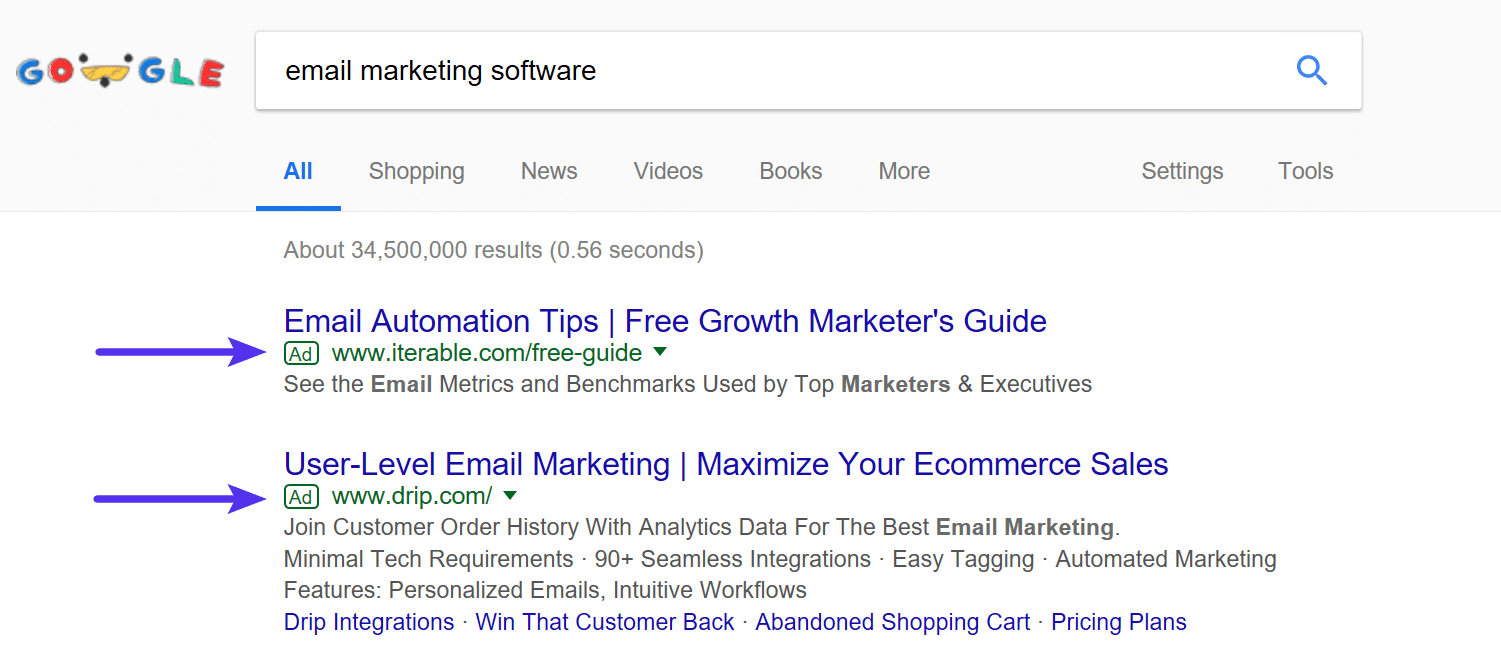
Google Search advertising offers numerous advantages that are worth considering.
- Budget control: Search ads is suitable for businesses with smaller monthly budgets (e.g., less than $10,000), providing more control over targeting and timing.
- Targeted keywords: Focusing on specific keywords helps capture users actively searching for your product or service, reducing wasted ad spend on uninterested individuals.
- Local market targeting: Search ads allows businesses to cater to local markets effectively by combining keyword targeting with geographic, language, gender, age, and affinity targeting options.
- Short sales cycle: Search ads aims to capture users near the point of purchase, eliminating the need for continued advertising to individuals who have already taken action.
- Remarketing flexibility: While remarketing can be beneficial, it is not essential for all businesses in Search ads, ensuring fresh and adaptable audience targeting.
Advantages of Display ads
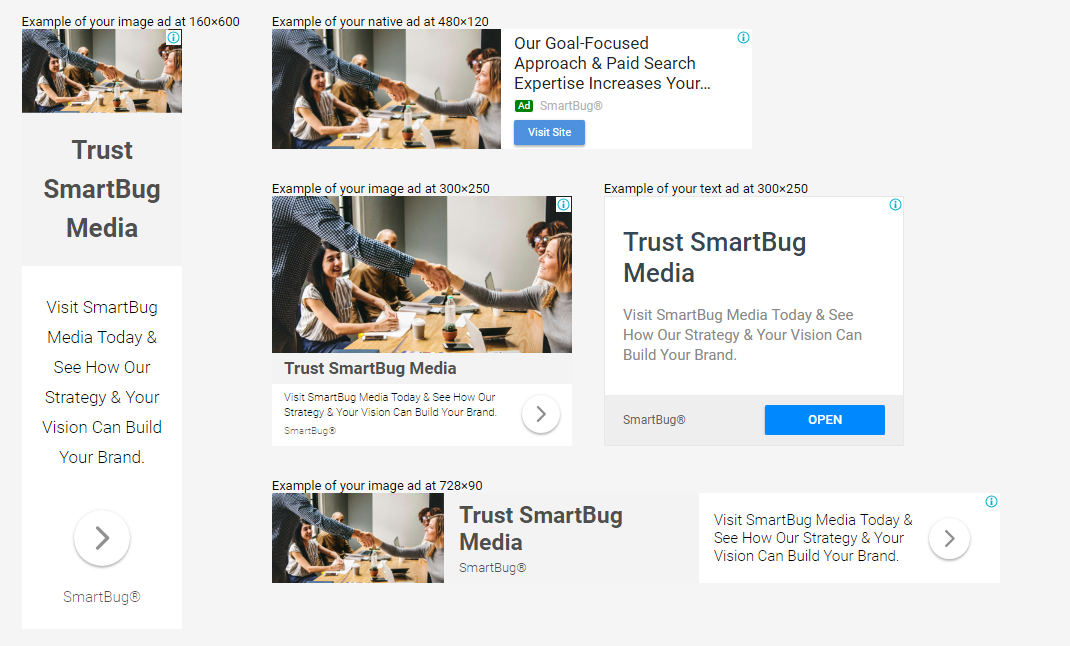
Display ads prove to be a powerful strategy for visually-oriented products like clothing, cars, beauty, and pet care. These products can be easily summarized and visually showcased with a single image, making Display ads highly effective.
- Industries with a less visually appealing nature:
Display ads can still be effective for industries like SaaS, insurance, education, or B2B services, but they require a different approach. Use short impactful phrases, key value propositions, or explanatory graphics to engage viewers quickly. Make sure your message is understood within three seconds.
- Unique access to niche or luxury buyers:
Display advertising provides access to niche or luxury buyers. Target specific websites through platforms for better targeting. Use data mining with Display ads to deliver your message at the right time while following privacy guidelines.
- Building brand awareness:
Build brand recognition with Display ads. Drive top-funnel traffic and establish brand equity. Use simple slogans or flagship product images that align with your website’s homepage for effective brand awareness Display ads.
Average metrics comparison
When comparing Google Search ads vs Display ads, it’s important to look at two key metrics: Conversion rate and cost per click. The industry benchmarks for these important metrics that Mega Digital collected from our customers can differ significantly between the two advertising platforms.
Average CVR
For Search campaigns, the average conversion rate across all industries stands at 4.40%. However, when it comes to Display campaigns, the average conversion rate is significantly lower at only 0.57%.
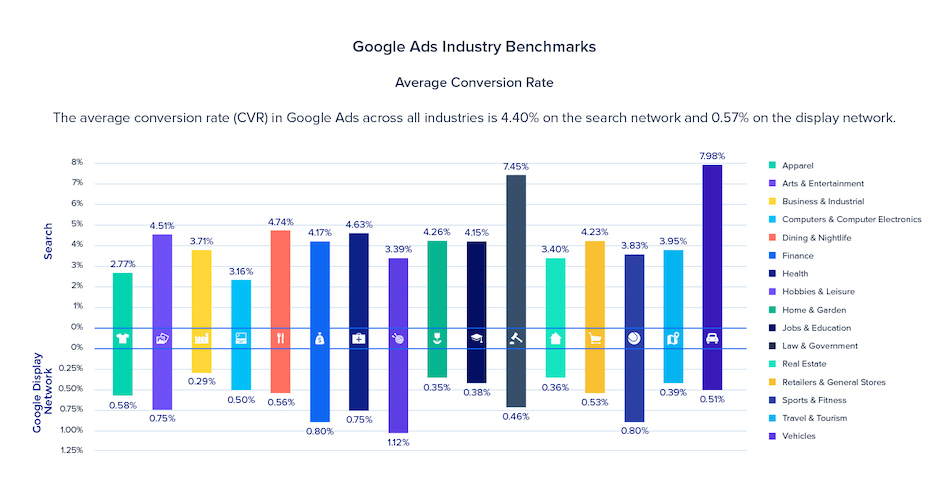
It is worth noting that even the highest Display conversion rate (1.12% for hobbies & leisure) falls short of the lowest search conversion rate (2.77% for apparel). The reason Search ads generally drive more conversions than Display ads is due to the Search Network connects advertisers with individuals actively searching for products, indicating higher intent and increasing the likelihood of conversion.
Average CPC
While the average conversion rate for Display ads may be lower, it is important to consider that the average cost per click (CPC) for Display network ads is also lower. For Search network ads, the average CPC is $2.41, whereas for Display network ads, it is only $0.59.

While saving ad spend is a significant advantage for brands, it’s important to remember that each brand has unique business goals. To determine whether to use search or Display ads, consider factors like your target audience, advertising objectives, and the nature of your product or service.
By analyzing these factors and understanding the strengths of each ad type, you can make an informed decision on when and how to effectively use search or Display ads.
>>> Read more: Google Shopping Ads Benchmarks: CPC, CTR, Budget, and More
How do they work? Difference between Search and Display ads
Both Search ads and Display ads are popular types of Google advertising, but the way they work is different.
How Search ads work
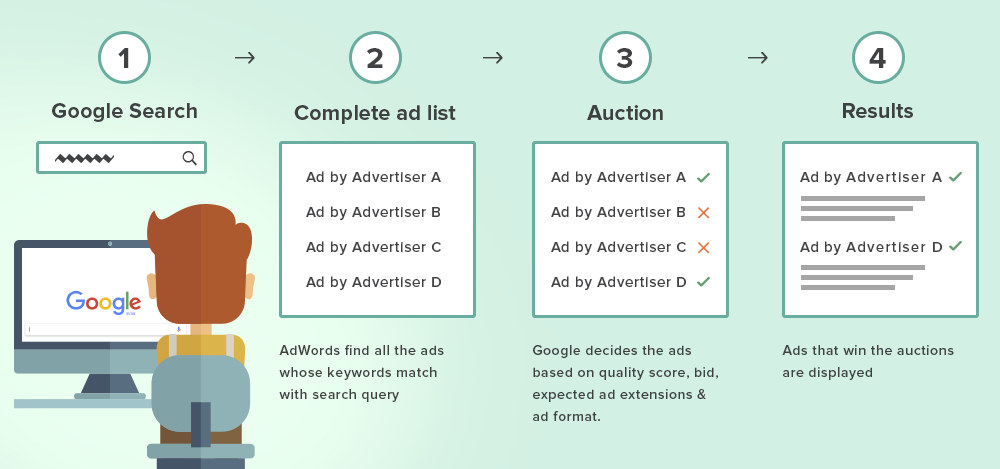
Search ads have three important parts with character limit: A headline, display URL, and description text. Their purpose is to persuade users to click by using different combinations of keywords and headlines. Ad extensions can be added to provide extra details and boost click-through rates (CTR).
- Limited to search engine results: Advertisers choose relevant keywords and bid to have their ads shown when someone searches for those words.
- Use a bidding process to determine which ads appear on SERP: The higher the bid on a search term, the greater the chances of showing up and securing a higher ad position. However, in platforms like Google Ads, you only pay when someone clicks on your ad, following a pay-per-click model.
- Offer advantages like reaching a targeted audience and paying only for engaged clicks: However, successful keyword selection and bidding require a solid understanding of your audience and the chosen platform.
- Can increase search engine traffic through SEO: By optimizing your website’s content, you can improve its ranking in organic search results, driving more traffic without additional advertising expenses.
The frequency, ranking, and cost-per-click of Search ads depend on your campaign’s Quality Score in Google Ads.
How Display ads work
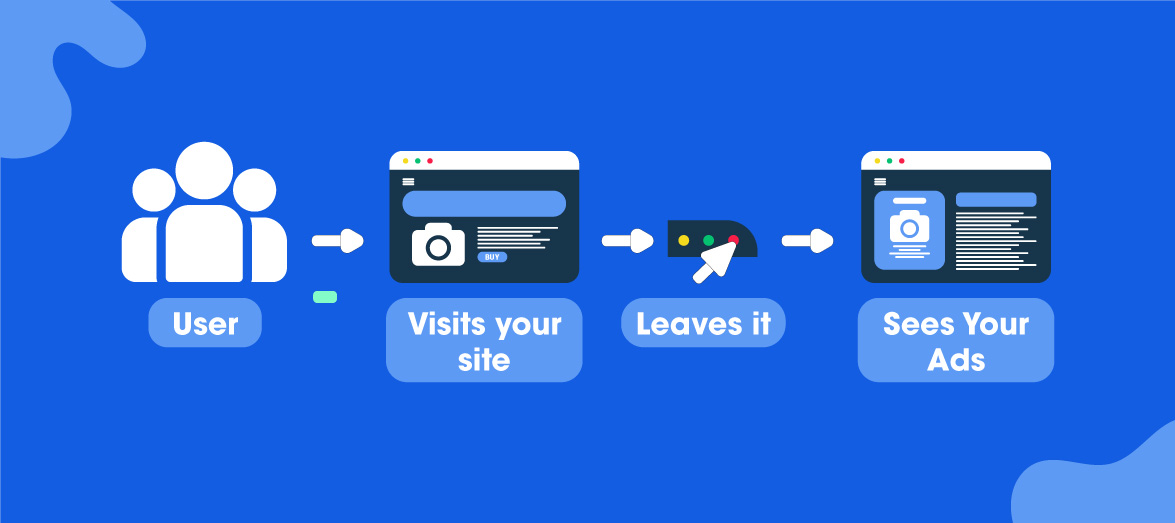
Unlike Search ads, Display ads have a wider reach and can appear on various websites through the Google Display Network. They are banners or text on websites sold to advertisers. This network includes millions of websites, giving you the ability to target specific audiences based on their interests, shopping behavior, and customized search terms.
- You can even choose specific website placements that align with your target audience, such as banner image ads and interactive formats.
- Platforms like the Google Display Network bundle sites into categories and offer them as a package.
- Advertisers bid for space on the chosen sites, with the highest bids winning.
- Some advertisers use Google remarketing to target users who have previously visited their websites.
- Display ads offer flexibility with various sizes and images, allowing for more creative options.
- Display ads can be easily ignored by website visitors who may scroll past them without paying much attention.
Read More: Top 10 Google Display Ads Examples
When to use each type: Search ads vs Display ads
Search Network vs Display Network, which is the best fit for your campaign? Let’s explore how to choose the right one for your specific needs.
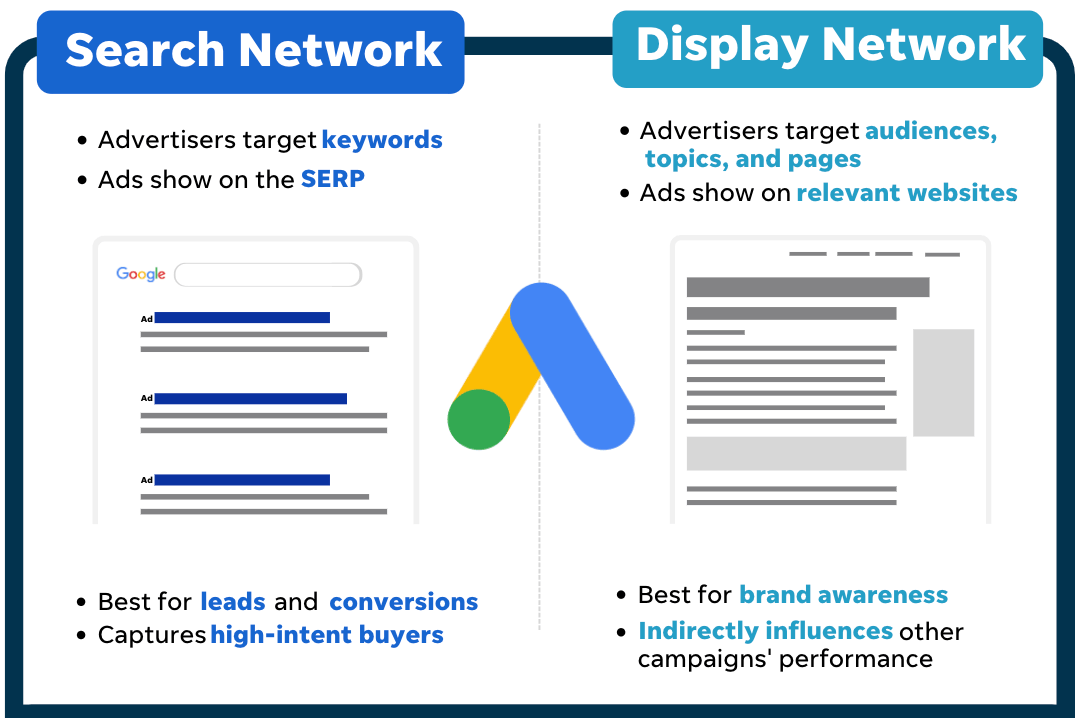
Search ads
Google recommends running both Search and Display campaigns for broad reach, but reaching a large audience isn’t always effective. Targeting the right audience is the key to successful advertising, focusing on those most likely to be interested in your product or service.
Supplement organic traffic
For businesses seeking quick results, search advertising offers a faster solution compared to relying solely on SEO. While organic results emphasize informative content, Search ads provide immediate solutions. Incorporating search advertising is an effective short-term strategy while simultaneously building your organic presence.
Get high-quality leads
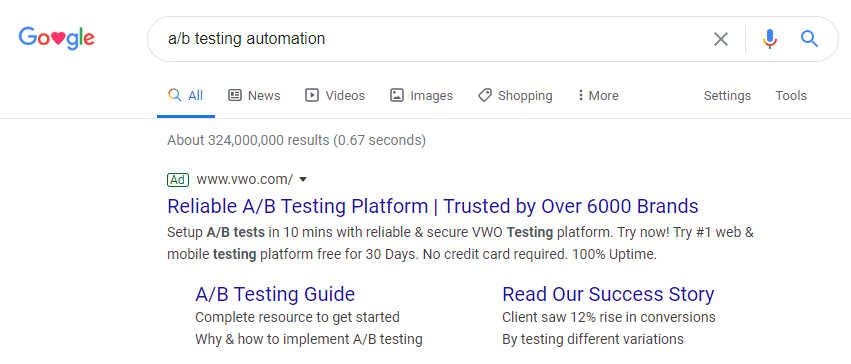
In search ad campaigns, you have the flexibility to use various keyword match types to trigger your ad. Additionally, you can employ negative keywords to prevent your ad from appearing when users search for irrelevant terms. This level of precision enables you to align your ads with the specific search intent of users.
Cater to a local audience

If you provide a local service and want to target a nearby audience, Search ads are the more suitable choice.
If you have a small and specific target audience, reaching a global audience through Display ads may not be beneficial for your campaign.
>>> Read more: Google Local Services ads – Maximize leads from local customers
Have a short sales cycle
Search ads are a good fit for products or services with a short sales cycle. This means you don’t have to advertise repeatedly to people who have already shown interest in your brand.
Promote emergency products

For professionals offering urgent or emergency services such as locksmiths, tow trucks, or electricians, Search ads are highly recommended. These services are typically sought out during critical situations, and people are more likely to search for immediate assistance rather than come across a display ad while browsing articles or social media.
For urgent services, like locksmiths or tow trucks, people typically search on mobile devices. To simplify the process, use call extensions in your ads for easy contact.
Suitable for smaller budget
For beginners or those on a limited budget, search engine advertising is a recommended option for several reasons:
- Flexible payment options: With PPC advertising, you can choose to pay per click or per 1,000 impressions, allowing you to align your budget with your goals.
- Targeted reach: By bidding on relevant keywords, you have greater control over reaching your desired audience. This leads to more qualified leads, higher conversion rates, and improved return on investment (ROI).
- Measurable results: PPC efforts are easier to measure and justify, providing clear insights into their effectiveness. Once you have mastered search advertising, you can then consider expanding to the Display Network for further reach.
Display ads
Product/service is more visual
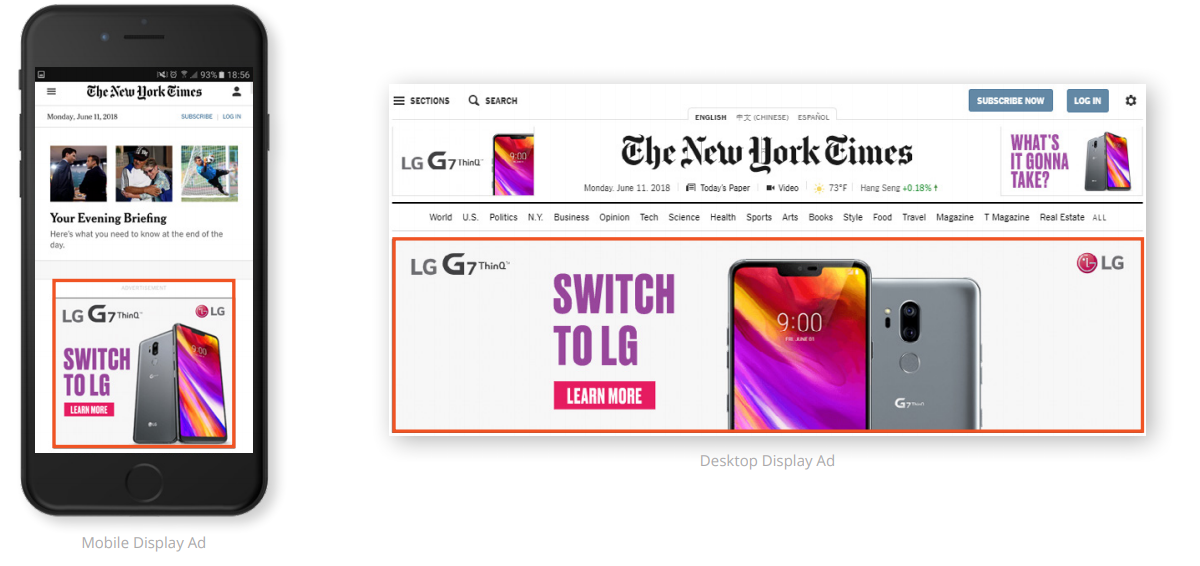
Display ads excel in showcasing visual content like images and videos, making them ideal for promoting products and services in industries such as apparel, home decor, vacation packages, and adventure/entertainment.
Display ads are highly effective when paired with visual digital assets such as videos, ebooks, infographics, and more.
Raise awareness among casual browsers
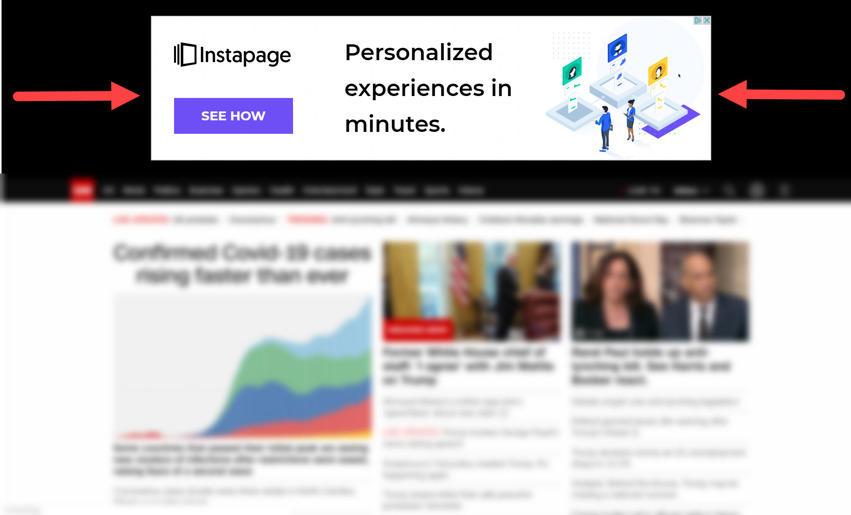
When people see Display ads while browsing websites, they are usually in the early stages of the marketing funnel, exploring their options without active intent to purchase. The display network is effective in generating demand for your product or service, creating a sense of want and need, even if customers are not aware of it yet. Unlike the search network that addresses existing demand, Display ads focus on cultivating interest and desire.
Have a longer sales cycle
If your product or service has a longer sales cycle and is not typically purchased immediately, Display ads are a great choice. To ensure your brand remains in the minds of potential customers during their decision-making process, you can implement digital advertising strategies such as:
- Cross-channel marketing: Spreading paid messages across multiple devices and digital marketing channels to guide consumers toward making a purchase.
- Omni-channel marketing: Offering a seamless user experience across all relevant channels in the buyer’s journey, allowing them to progress through the marketing funnel without any obstacles.
- Retargeting: Displaying ads to individuals who have previously interacted with your brand, keeping your brand in front of them even after they have left your website. This strategy is especially useful in the ecommerce industry, such as targeting users with abandoned shopping carts.
Reach niche markets

Display ads are effective in building brand awareness because they appear on websites where your potential customers are already engaged. With Google’s vast network of over 2 million websites, your ads can be matched to relevant web pages based on your keywords. This allows you to target a niche audience through interest-based ads or contextual ads.
So, Search advertising vs Display advertising? I believe you now have your own answer.
For a comprehensive guide on mastering Google Ads, download the free ebook authored by experts from Mega Digital and uncover all the details you need.

Which option to choose: Display ads vs Search ads
Each type of ad has its advantages and can be valuable in different scenarios. However, it’s vital to understand the distinctions and know when to utilize each one effectively.
Once you’ve decided on your ad format and crafted your advertisement, it’s important to connect your ads to landing pages that are relevant. Landing pages play a significant role in driving conversions. Explore the possibilities of creating dedicated landing pages right here: How to Create a Landing Page for Google Ads with Easy Steps
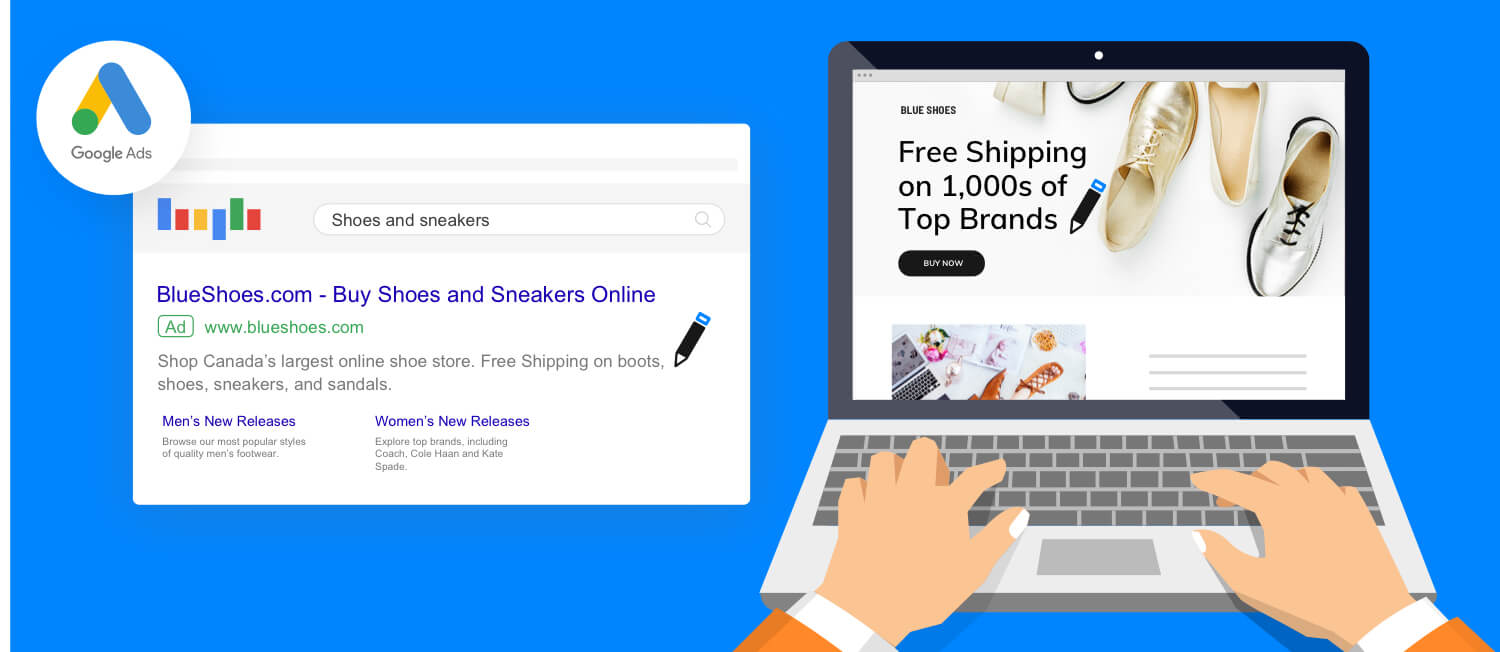
Final word
In conclusion, when considering the difference between Search ads and Display ads, the choice between the two depends on the specific goals and target audience of your campaign.







